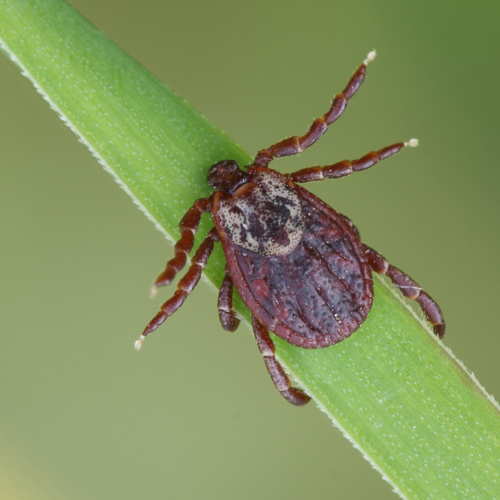Blacklegged Deer Tick

Proud Supporter of Disabled Veterans
No Contracts
Services provided without written contracts.
Introduction to
The blacklegged deer tick, scientifically known as Ixodes scapularis, is a notorious pest recognized for its ability to transmit Lyme disease and other serious illnesses to humans and animals. Commonly found in wooded and grassy areas, these ticks pose a significant health risk, making it crucial to understand how to identify, prevent, and professionally manage them. This article explores the recognition, biology, habits, prevention, and professional handling of blacklegged deer ticks, offering a comprehensive guide to understanding and managing these dangerous pests.
Recognition
Blacklegged deer ticks are small, hard-bodied ticks, with adults measuring about 2 to 3 millimeters in length before feeding. They are named for their distinctive black legs. Adult females have a reddish-brown body with a dark brown to black dorsal shield, while males are uniformly dark brown. Nymphs and larvae are smaller and lighter in color but still possess the characteristic black legs. These ticks can be differentiated from other tick species by their size, coloring, and the lack of festoons (rectangular grooves) along the edge of their body. After feeding, females become engorged and can swell significantly in size, turning a grayish-blue color.
Biology
The blacklegged deer tick undergoes a four-stage life cycle: egg, larva, nymph, and adult. Each stage requires a blood meal from a host to progress to the next. Female ticks lay eggs in the spring, which hatch into six-legged larvae. These larvae feed on small mammals or birds during the summer and then molt into nymphs. Nymphs seek out larger hosts, including humans and pets, in the following spring and summer. After their second blood meal, they molt into adults. Adult ticks are active in the fall and early spring, feeding on large mammals such as deer, which is where they get their common name. The entire life cycle can take two to three years to complete.
Habits
Blacklegged deer ticks are primarily found in wooded, brushy, and grassy areas, especially where there are high populations of deer. They are most active in the spring, summer, and fall but can be active year-round in milder climates. Ticks wait on grass blades or leaf litter with their front legs outstretched, ready to latch onto passing hosts in a behavior known as questing. Once attached, they can feed for several days before dropping off. These ticks are vectors for various diseases, most notably Lyme disease, anaplasmosis, babesiosis, and Powassan virus, making their control and prevention vital for public health.
Prevention
Preventing blacklegged deer tick bites involves multiple strategies. When spending time in tick-prone areas, wear long sleeves, long pants, and closed-toe shoes, and use insect repellent containing DEET, picaridin, or permethrin. Perform regular tick checks on yourself, family members, and pets after outdoor activities. Keep your yard tick-free by mowing the lawn regularly, removing leaf litter, and creating a buffer zone of wood chips or gravel between your yard and wooded areas. Use tick preventatives on pets as recommended by a veterinarian to reduce the risk of ticks entering your home. Consider installing deer fencing to reduce deer populations, which can carry ticks.
Professional
If you suspect a blacklegged deer tick infestation on your property, professional pest control services can provide effective solutions. STL Pest Control offers specialized treatment plans to manage and eliminate tick infestations. Their experienced technicians will conduct a thorough inspection to identify tick habitats and apply targeted treatments to reduce tick populations. They use environmentally friendly insecticides and provide advice on long-term prevention strategies to keep your property tick-free. Professional intervention ensures that tick problems are resolved safely and effectively, protecting your family and pets from tick-borne diseases.



Our Office







